The term “simulator” invokes visions of flight simulators for pilot training under a variety of conditions. But they can be so much more! Simulators are powerful tools in understanding how a company’s offers would perform under different market conditions. KS&R works with many of our clients in developing these tools and running market simulations to assist in determining how best to feature, brand, price and/or promote their products and services.
Why use a Market Simulator?
- They can be used to consider the implications of existing competitive offers or potential competitive responses to new offers.
- They can be used to test price models and price sensitivity, enabling consideration of how demand is likely to change based on the level and structure of the pricing.
- Simulators are also often used to determine the best product mix, helping to understand how the mix of features and prices affect customers’ purchase choices among the array of products a company offers.
- They are even used to provide recommendations on bundling.
What is a Market Simulator?
Market simulators are interactive software-based tools that allow development and testing of a variety of market scenarios.
Typically, analysis begins with a “base case” that is considered reflective of the existing market, albeit a simplified view. Simulations are then run by making changes to the base case and see how demand for products or services changes.
Simulations may include adding or deleting products, changing prices, adding new features or promotions to one or more products, etc. Changes in demand can be analyzed across the total respondent base, or on key segments.
The ability to test what moves demand the most is a key benefit of market simulators.
What’s behind the curtain?
Market simulators are typically built off of quantitative choice-based or conjoint research. This research involves:
- Breaking down a product or service into its key features, such as brand, price, functions, and benefits.
- Building a design matrix that includes these key features and 3-4 levels each feature might have (e.g., price level, specific brand).
- Asking survey respondents to make choices among products or services with different combinations of the feature levels.
- Using the choices to construct values, or utilities, for every level of every feature in the design matrix.
Market simulators use these values (utilities) to determine the preference and, with appropriate calibration, the expected demand for the products or services that are simulated in a market scenario.
How do we start?
Developing the appropriate design matrix is a key to success and should not be rushed:
- Recognize that market simulations provide a simplified view. Not every product/service feature can or should be included.
- Identify which competitors will most influence your success and include them in the design matrix.
- Develop price ranges that are inclusive of yours and competitors’ potential prices.
- Identify levels for other features. These can be as simple as included/not included, or may have levels associated with the richness of the feature (e.g., basic, average, premium).
- Before finalizing the design matrix, develop your base case — your depiction of the starting point for your simulations. Developing the base case using the design matrix gives you another way of testing whether or not you have included all necessary features in the design.
What’s next after the design matrix?
Once a design matrix is constructed, other important steps need to be accomplished:
- Develop the choice card template. Key to the design will be the ability for respondents to view and easily compare multiple offers (typically 3-4) so that they can select a single offer or
allocate their purchases/spend across multiple offers. - Make sure that survey questions leading up to the choice exercise clearly define the concepts that will be covered in the choice card.
Other considerations?
While market simulators are very powerful tools, there are some cautions that need to be considered.
- The simulator is only as good as its initial design. If the design does not capture the major aspects of a product/service that affect demand, findings could be misleading.
- Market simulators simulate the demand side of the equation. Supply-side data, particularly cost data, are also necessary to make final decisions on prices and offers.
- By its design, choice-based or conjoint research assumes 100% awareness and availability as well as no barriers to purchasing. These are not typical market conditions and calibration adjustments need to be made to accommodate estimates of both.
What are the considerations in simulator tool design?
Ease of use is important in the design of such a powerful tool. Here are just a few important considerations when designing the simulator tool:
- Maximum number of simultaneous offers. Considering the competitive landscape, how many different offers might be included in a simulation.
- Key segments to analyze. In addition to the total respondent base, identify what are specific segments for which you would like to understand the results of simulations.
- Roll-up of output. In addition to seeing findings for each individual offer, identify if there are groupings of offers that would be helpful to see (e.g., by brand).
While setting up an appropriate design may take some time and effort, our clients have typically found the value of the resulting simulator tool as well worth it. We at KS&R are happy to assist in preparing for takeoff.


